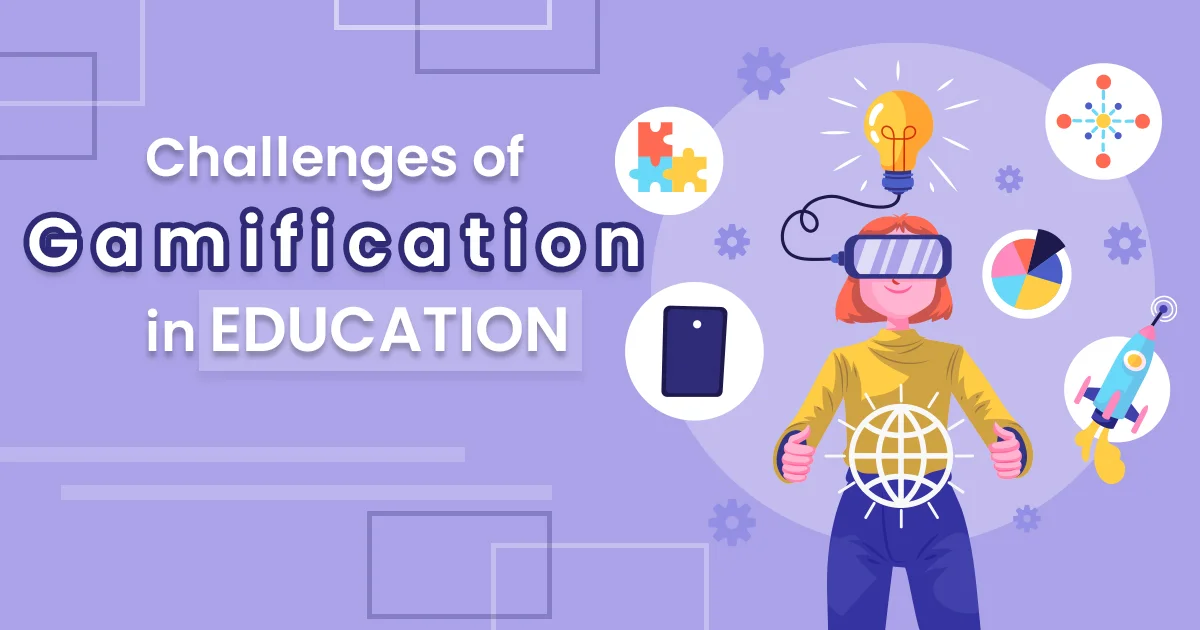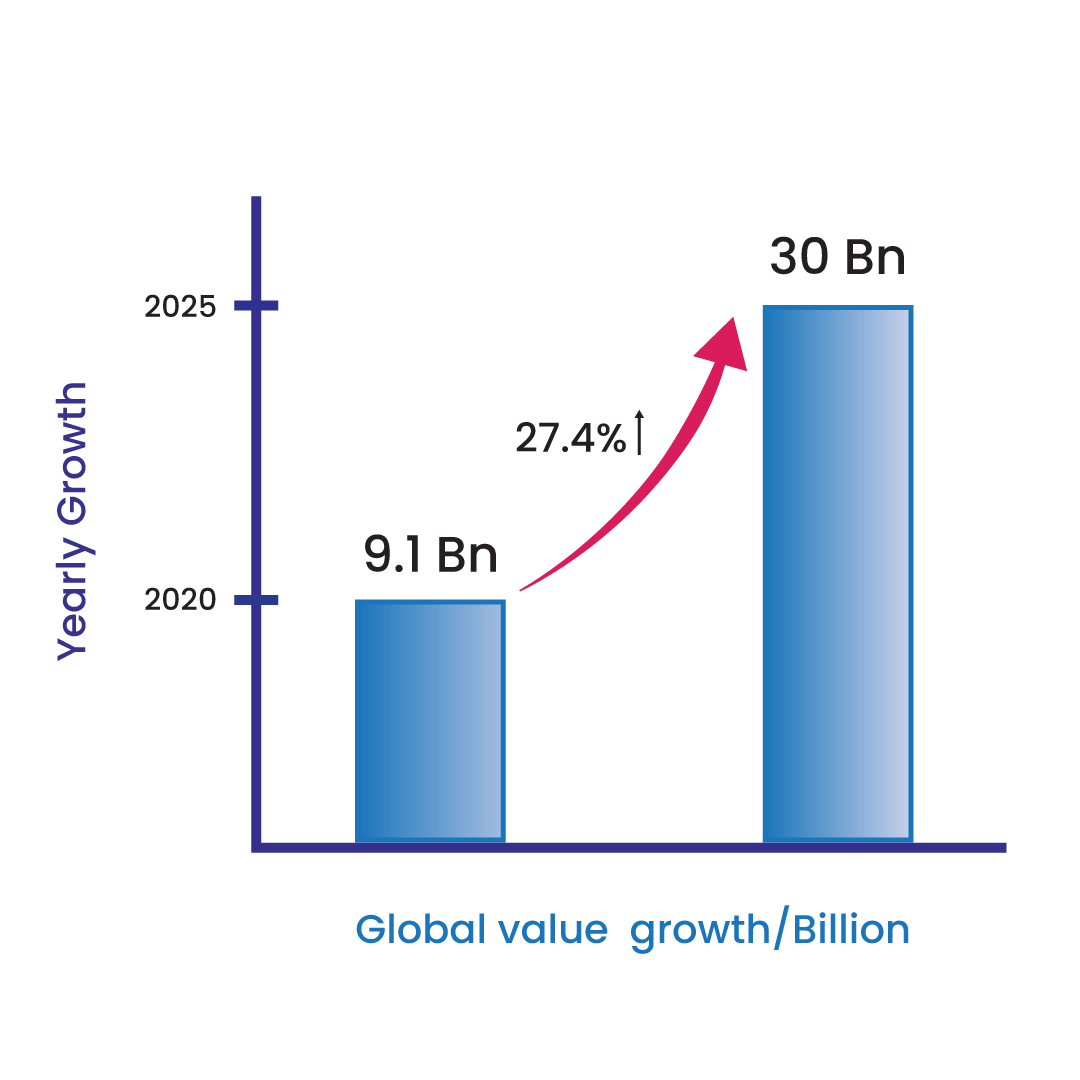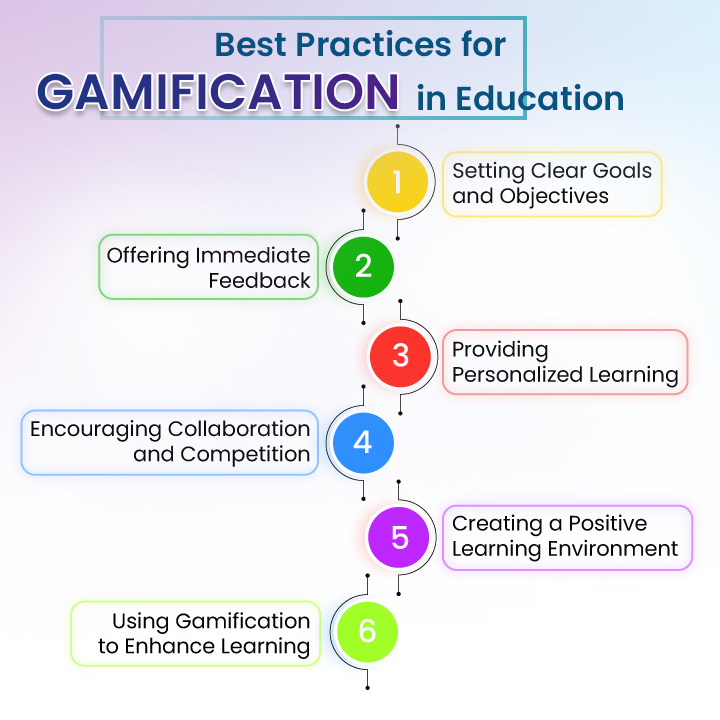
Gamification services are used in education to make learning interesting and fun. Many organizations and educational institutes are implementing this technique to boost the learning environment among learners.
The importance of gamification services in eLearning is that they offer uniqueness to learning and create engagement with learners who like to study more. In this article, we will discuss the challenges of gamification in education and how to overcome them.
The role of gamification is increasing rapidly in education. It is considered a great tool to enhance the learning experience. For instance, wouldn't a game with scenario-based questions be more fun than a couple of questions in MCQ form as a part of the onboarding process?
Also, read about Gamification in Corporate Learning.
A recent study by MarketsandMarkets states that the market of gamification size in 2020 has a global value of 9.1 billion and is predicted to grow by reaching $30.7 billion, reaching $30.7 billion by 2025. Gamification creates an informal setting where a learner can explore the topic that will build up in opening their mind.

Some of the challenges of gamification in education are as follows:
The first challenge that arises is the lack of understanding of the concept of gamification. It is important to understand the concept before deciding if it is beneficial for you or not.
Introducing all possible components, such as points, levels, badges, and rewards, at once can reduce the learner's attention from the main focus. Overemphasizing rewards and punishment can result in the learner driving away from the main focus, learning. Focusing too much on rewards and punishment is not a valid point while developing a gamification module.
There is no one-size-fits-all design or template that suits all eLearning concepts. The design needs to be customized as per the suitability and needs of all the learners. This is what the challenge is, failure to integrate gamification into the curriculum.
The trend of playing games among youngsters is at its peak; thus, marketing the idea and benefit of game-based e-learning to parents and faculty is not easy. In their mind game is something that only wastes time. The stigma associated with games and play is difficult to overcome, especially in an educational setting, where results and accountability are necessary.
The techniques to overcome the challenges of gamification services are as follows:
When discussing gamification, teachers, parents, and even students think we are discussing the game. But it is not the game we are discussing but it is to make learning more interactive and engaging. Introducing them to gamification services is important to get acceptance from educators, parents, etc. The best way to do this is by showing them some live examples to make them understand.
"Provide your educational content with a Gamified touch."
The game must meet certain learning outcomes when making game-based learning educational and useful in the classroom. Adapting the games to these outcomes necessitates various difficulty levels, "quests or challenges," and various steps or levels to "win" the game. Depending on the curriculum, only gamification shall be integrated.
Development of the game itself comes with a set of challenges, but there are other issues too that arise when implementing Game-Based learning. In short, well-designed gamified content should stick to the learning objectives. Gamification should push the learners to achieve a new level and help them learn quickly, not take them away from their real purpose.
Some of the best practices of gamification in education are as follows:

Measuring gamified content to achieve learning goals is a must. It may need to be modified as the learner's demographic changes or revision is required.
With the help of Game-based learning, educators can provide feedback in unique ways to the learners, which is an essential part of the learner's understanding of the performance curve. It also helps the learners to understand the knowledge gaps, if any.
The technique of gamification makes knowledge absorption easy. Learning through game dynamics improves productivity, making the environment conducive to retaining information.
Every learning content has specific goals. The objectives cannot be accomplished unless the learners feel excited about learning and knowing more. A creative course content challenges learners to think, explore, and increase engagement.
The traditional way of learning is quite boring, and students often sleep while learning through this method. Whereas with gamification, there is an increase in participation among fellow employees, and it helps them bond right from the start.
Gamification has several ways which show that it enhances learning. People find to retain the information for a longer time frame when learning is done interactively. The human brain is attracted to new learning techniques, meaning learning in a fun way.
This blog discussed the challenges of gamification services in education and how to overcome them. There are several challenges when developing gamification, such as a lack of understanding of the gamification process, overemphasizing rewards and points, failure to integrate gamification with the curriculum, and resistance from students and teachers.
Whereas there are several strategies to overcome the challenges, gamification is important in education as it makes learning fun and easy to understand. With the help of gamification services, learners can retain information for a longer time frame.
The future will be full of gamification, as education is being made fun and easy. As per the research, by 2025, the overall turnover of gamification services could reach $30.7 billion.
Share